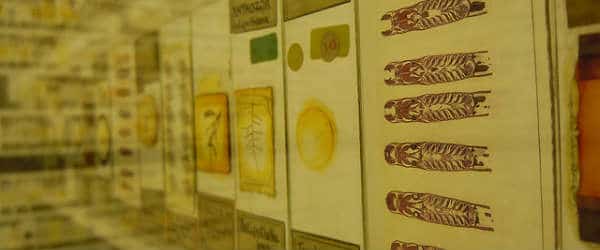The study of geometric probability in stereology may seem like a large, overwhelming area of focus but, don’t panic, it’s not! In fact, it is a very specific field that is likely to come easy to those that excel in mathematics or science (yes that means you). However, the concept is not one that most people can grasp, let alone learn, especially if communication of the material is poor.
We’ll take it easy
So, before you can understand and apply this over-complicated discipline to your work, you need to first have a basic, clear and solid understanding of each component, which is why this article (and Part 2) will provide the information in the simplest of terms.
Math 101
At some point or other, every pupil and student learns geometry. This is the branch of mathematics which asks (and answers) questions regarding the shape, size, special properties and position of an object in relation to another. To apply geometric concepts, you must determine the height, length or width of the object in question so that you can obtain its area, diameter, circumference, volume or the distance between it and another item. It allows a researcher to apply a number to a one-dimensional object, such as a line, a two-dimensional structure, like an image or a three-dimensional item, like you!
We live in 4-D
People can also fall into the category of being four-dimensional because life occurs in the dimension of time, which is relative to motion and space. As for the zero dimension, this refers to an immeasurable point in space and time; it has no length, width, height, depth or volume. It is an infinitely small singularity that can be defined as nothing, or as a point where everything occurs in the same place. An example of such a dimension is the black hole or the period at the end of this sentence.
Enjoying this article? Get hard-won lab wisdom like this delivered to your inbox 3x a week.

Join over 65,000 fellow researchers saving time, reducing stress, and seeing their experiments succeed. Unsubscribe anytime.
Next issue goes out tomorrow; don’t miss it.
Grab your compass and ruler!
As a reminder, geometry also incorporates the use of graphs, linear equations, curves, planes, the compass and simple straightedge rulers, all of which are important to geometric probability in stereology.
Stereology- a reminder
As you will know from reading the two-part introduction, stereology is an area of scientific study that relies heavily on geometry, as its goal is to obtain the quantities, or numbers, of three-dimensional objects, those with a measurable height, length, and width, by using images that have only two-dimensions: width and length. The method for discovering such numbers is not discussed here, instead, the focus is on the importance of finding these numerical values. Once you have the data necessary to move forward, you can use it to analyze and explain the relationship between an item’s function and its structure.
Geometric probability in stereology
Before fully submerging into the role of geometric probability in stereology, you should first have a smattering of knowledge about geometric probability. As its name suggests, geometric probability is exactly that- it is the act of finding a probability by using geometry. You simply apply formulas, lines or planes to the given geometric figure and then use this information to answer the probability question.
The world where math meets science
Now that you have a simplified break down of each component involved in geometric probability in stereology, you are ready to dive in and explore this world where mathematics meets science. Join us in Part Two where we travel to this world!
You made it to the end—nice work! If you’re the kind of scientist who likes figuring things out without wasting half a day on trial and error, you’ll love our newsletter. Get 3 quick reads a week, packed with hard-won lab wisdom. Join FREE here.







